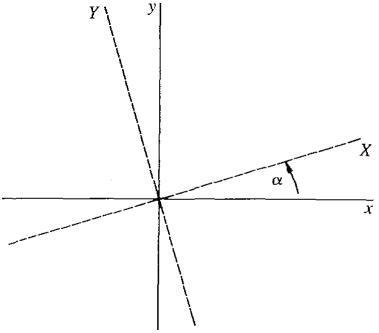| The ebook Elementary Calculus is based on material originally written by H.J. Keisler. For more information please read the copyright pages. |

|

Home  Limits, Analytic Geometry, and Approximations Limits, Analytic Geometry, and Approximations  Rotation of Axes Rotation of Axes  Rotation of Axes Rotation of Axes |
|






|
|
Rotation of Axes
We have seen how to graph any second degree equation with no xy-term. These graphs are parabolas, ellipses, or hyperbolas with vertical and horizontal axes. When the equation has a nonzero xy-term, the graph will have diagonal axes. By rotating the axes, one can get new coordinate axes in the proper direction. The method will give us a new equation that has no xy-term and can be graphed by our previous method. Suppose the x and y axes are rotated counterclockwise by an angle a, and the new coordinate axes are called X and Y, as in Figure 5.7.1. A point P in the plane will have a pair of coordinates (x, y) in the old coordinate system and (X, Y) in the new coordinate system. The old and new coordinates of P are related to each other by the equations for rotation of axes.
Figure 5.7.1: Rotation of Axes
|
|
Home  Limits, Analytic Geometry, and Approximations Limits, Analytic Geometry, and Approximations  Rotation of Axes Rotation of Axes  Rotation of Axes Rotation of Axes |
|
Last Update: 2006-11-25


